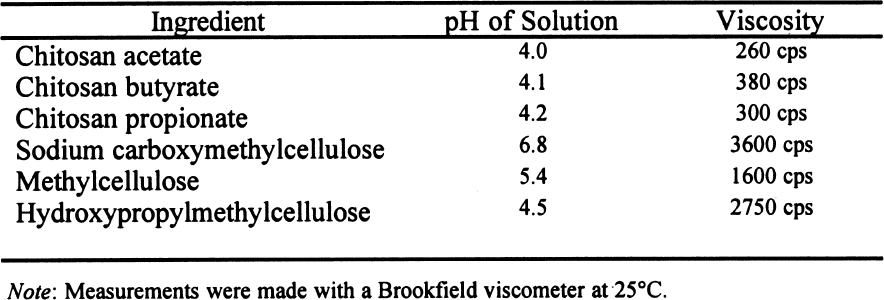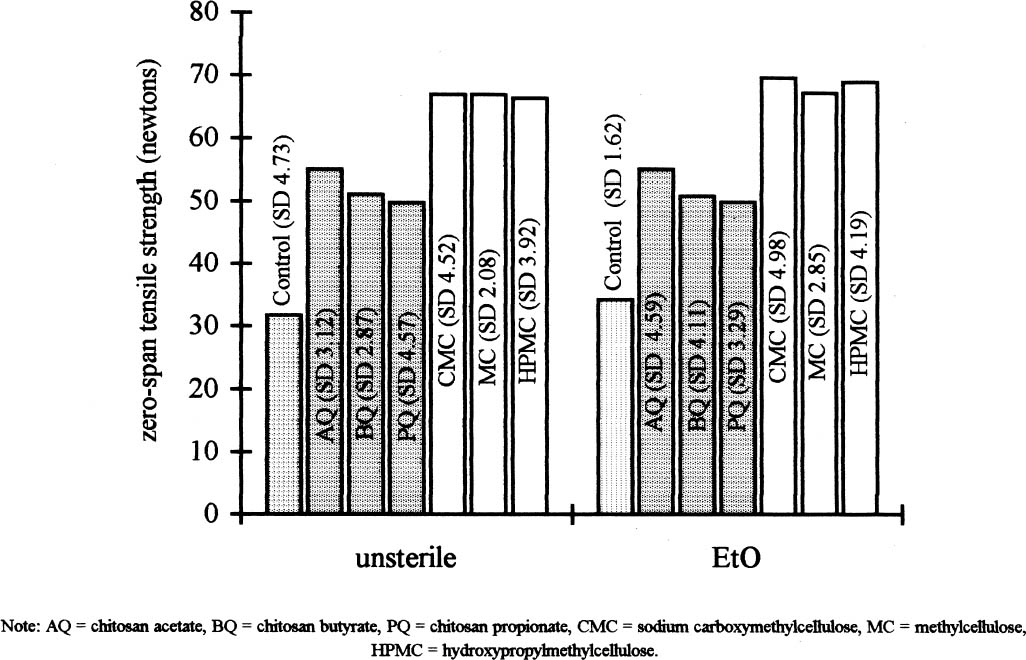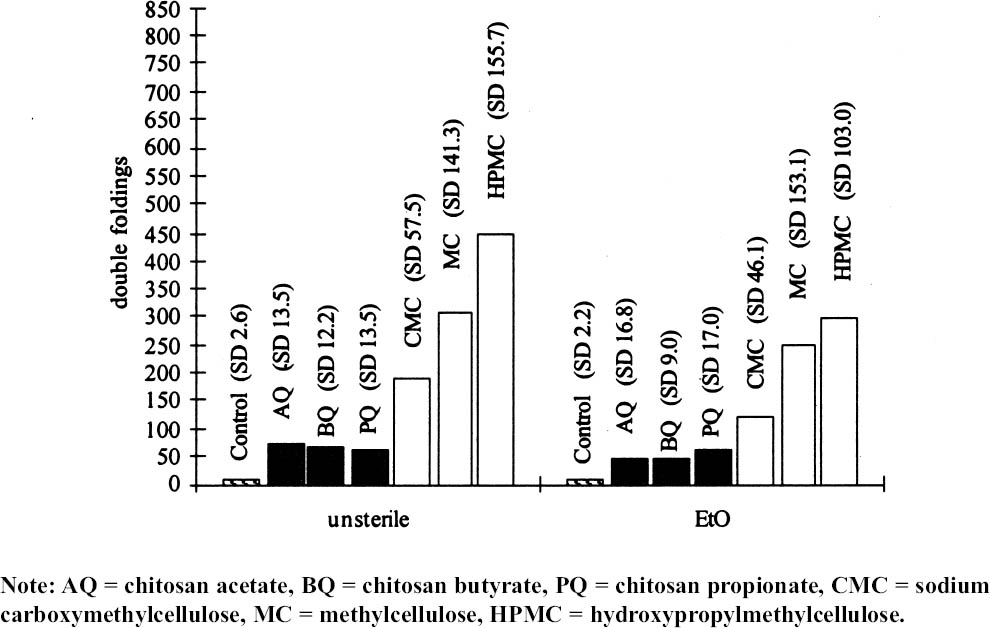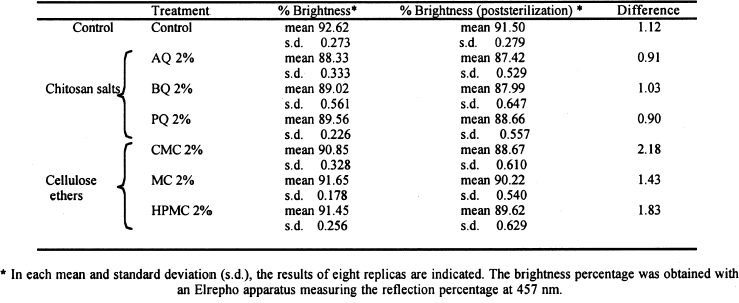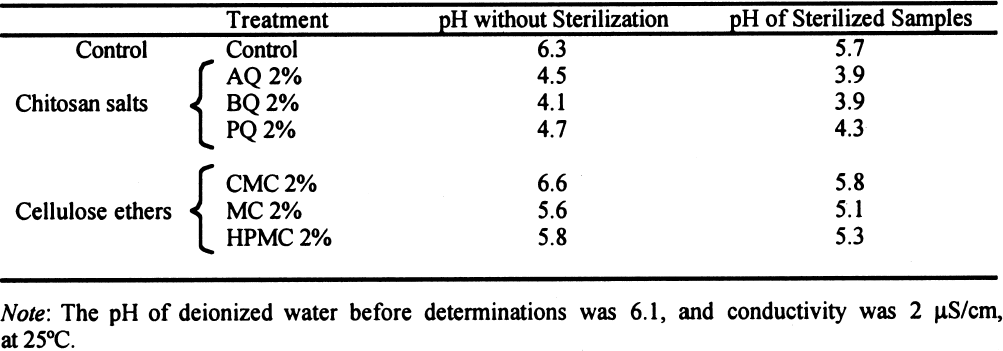ANTIFUNGAL PROTECTION AND SIZING OF PAPER WITH CHITOSAN SALTS AND CELLULOSE ETHERS. PART 1, PHYSICAL EFFECTSMARIA DEL PILAR PONCE-JIM�NEZ, FERNANDO A. L�PEZ-DELLAMARY TORAL, & EZEQUIEL DELGADO FORNU�
4 RESULTS4.1 VISCOSITY AND PH OF THE POLYMERIC SOLUTIONSThe viscosity of 2% solutions of chitosan is very low in comparison with cellulose ethers, thus facilitating the penetration of the solution into the paper fiber mat and making impregnation more homogeneous. All of the chitosan solutions were acidic (table 1) as a result of the preparation method of the solutions and not from any inherent characteristic of the chitosan. MC and HPMC were also acidic but could be easily adjusted by adding any alkaline agent, such as calcium hydroxide (Ca [OH]2). On the other hand, chitosan solutions will precipitate at a pH higher than 5.8.
4.2 EFFECTS OF THE COATINGS ON PHYSICAL AND MECHANICAL PROPERTIES OF THE PAPERBefore the antifungal protection tests (Ponce-Jim�nez et al. 2002), the physical and mechanical properties—folding endurance, zero-span tensile strength, brightness, and pH—were evaluated to determine how the coating affected these properties of paper. Treatment with chitosan increased both the paper's zero-span tensile strength and its folding endurance. Treatment with cellulose ethers had the same effect, but to an even greater degree (figs. 2, 3). Sterilization with EtO slightly increased the zerospan tensile strength in all cases. Folding endurance increased significantly with both treatments, although cellulose ethers were more effective than chitosan. On the other hand, after sterilization with EtO, the folding endurance decreased
The resulting percentages of brightness before and after sterilization with EtO are shown in table 2. The last column indicates the difference between the means of the first and the second column. Chitosan salts caused more loss of paper brightness than cellulose ethers did. The sterilization with EtO slightly darkened the paper coated with either chitosan salts or cellulose ethers. The pH and viscosity using the three chitosan salts were very similar (see table 1). Cellulose ethers produced higher viscosity than the chitosan salts, and the pH was variable. Table 3 shows the results of the pH measurements of the aqueous extracts of paper before and
Chitosan salt solutions are more acidic than cellulose ether solutions. Sterilization with EtO caused a slight decrease in the pH of all the samples. |
